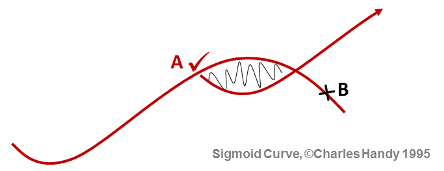Organisational Transformation
There are many starting points for transformations: New competitors and partners are entering the arena, a new strategic direction needs to be implemented, new organizational values are due to anchored into the companies DNA, reorganized structures need to be reflected in day-to-day processes, innovative products are requested by the customers. Wherever the initiation comes from, today’s companies have to transform rather constantly.
Transformation is a dynamic process whereby the organization is changing and adapting to external or internal forces. There are three modes of transformation that can be differentiated (Thomas R. Rochon “Culture moves”) :
- conversion – the replacement of existing organizational values, structures or strategies with new ones
- creation – the development of new ideas and products for new market or new customer needs
- connection – the development of links between partners and topics previously being unconnected or connected in a different way
All three ways of transforming the business require a careful timing and handling in respect to the actual capabilities and capacity of the organization. In today’s time organizations are already fully loaded with current issues, the backlog of recent changes and the ambiguous outlook for the future. Most changes and initiatives are therefore only successfull if they do meet the window of opportunity when the organization is able to follow. Here leaders have to follow their intuition and experience with the organization to determine a proper timing.
A helpful model to detect a good point in time for starting a transformation is the known life cycle model. It can be applied not only on products but even more powerful as well on organizations.

At the beginning of a life cycle energy has to be invested. After this first period the organizations enters in a period of payback, in form of better running processes, better products, better reputation etc. Then after a certain time the development stalls and afterwards the organization enters a phase of out-phasing.
Starting the transformation now (Point B) has little chances of success. The mood and energy is already down, doubt about the future are constantly in the grapevine and the attention of people has turned from growth to survive.
Strategic leadership means to start preparing the next development already earlier (Point A) when the positive power of the organization can be used to fuel the investment of the next life cycle.
